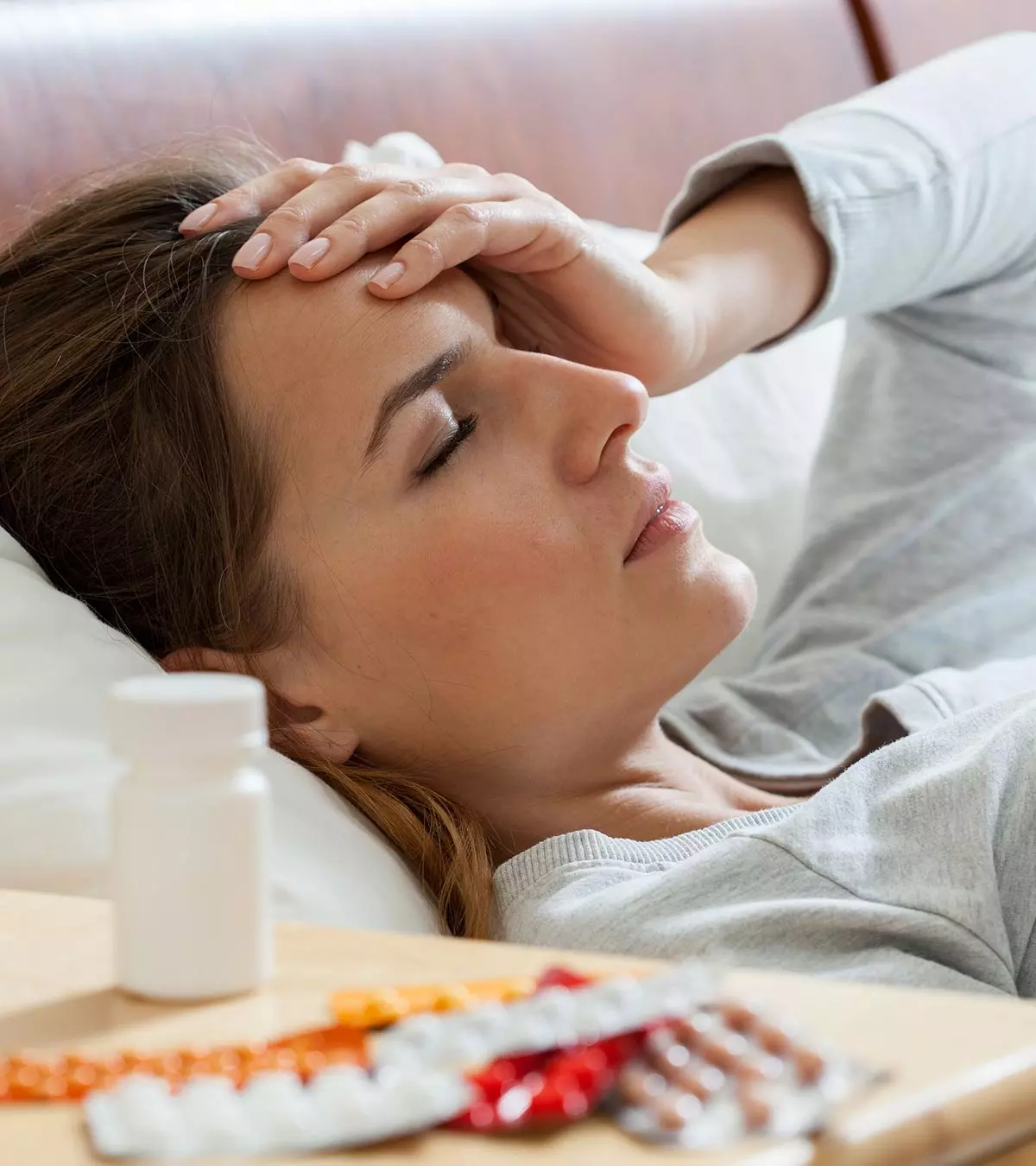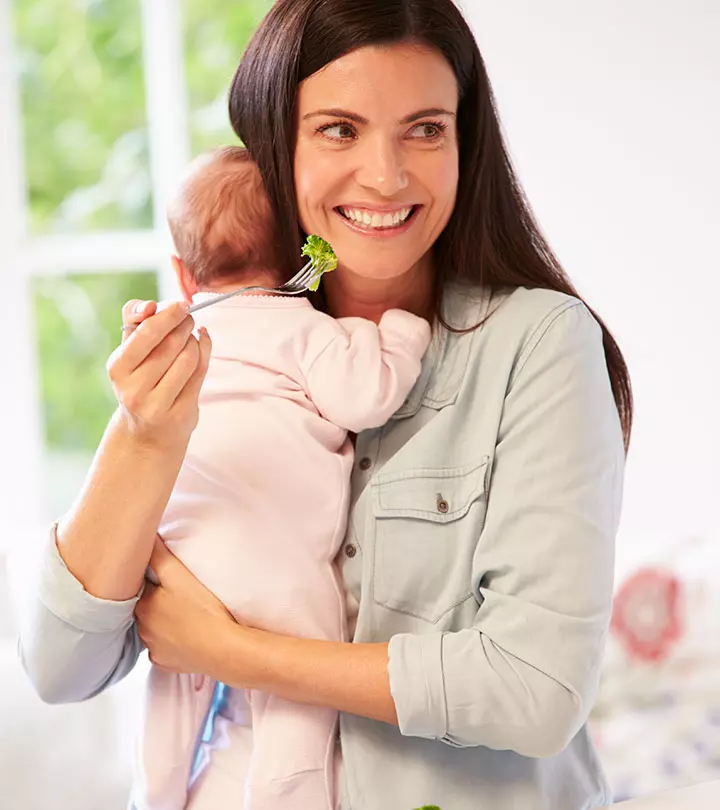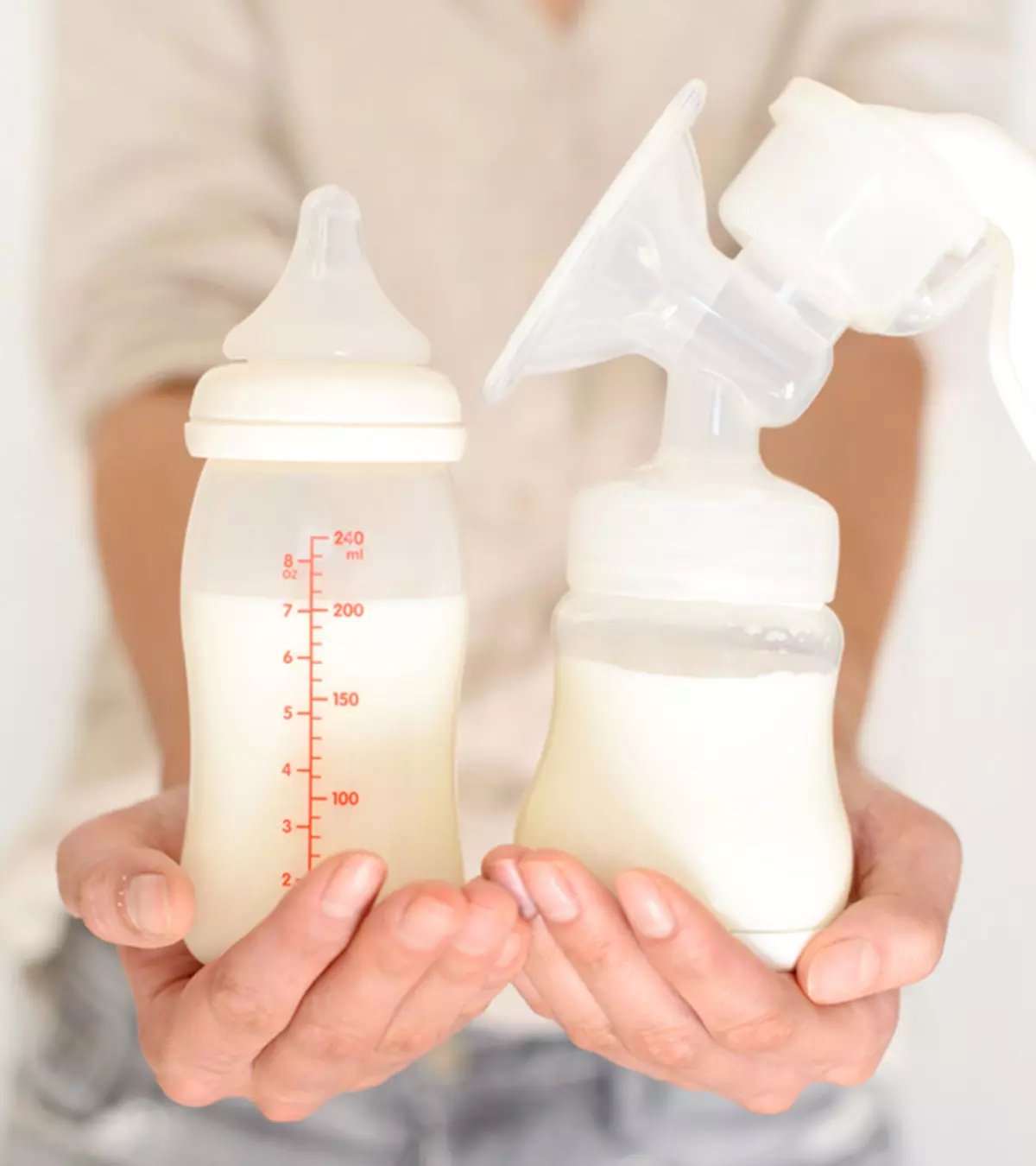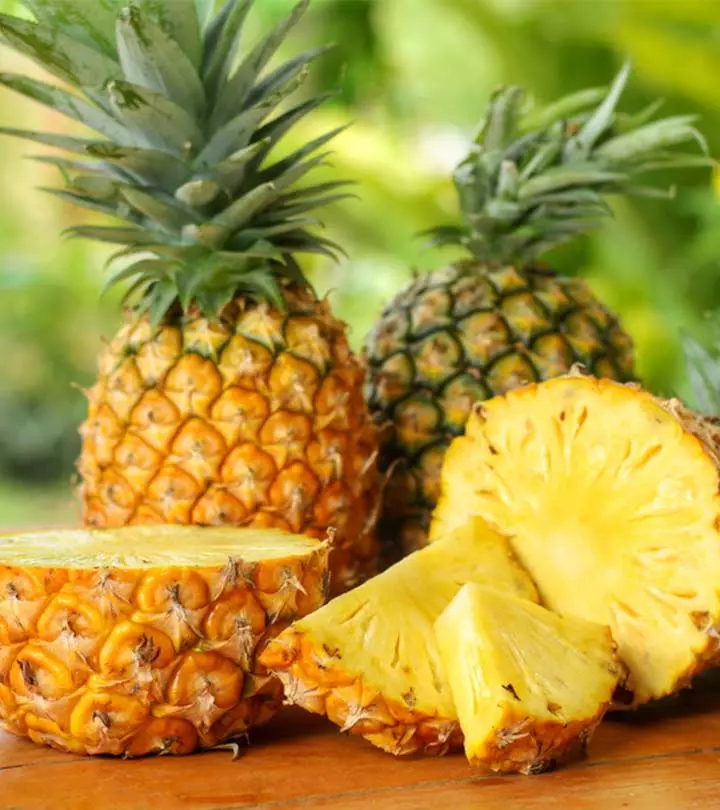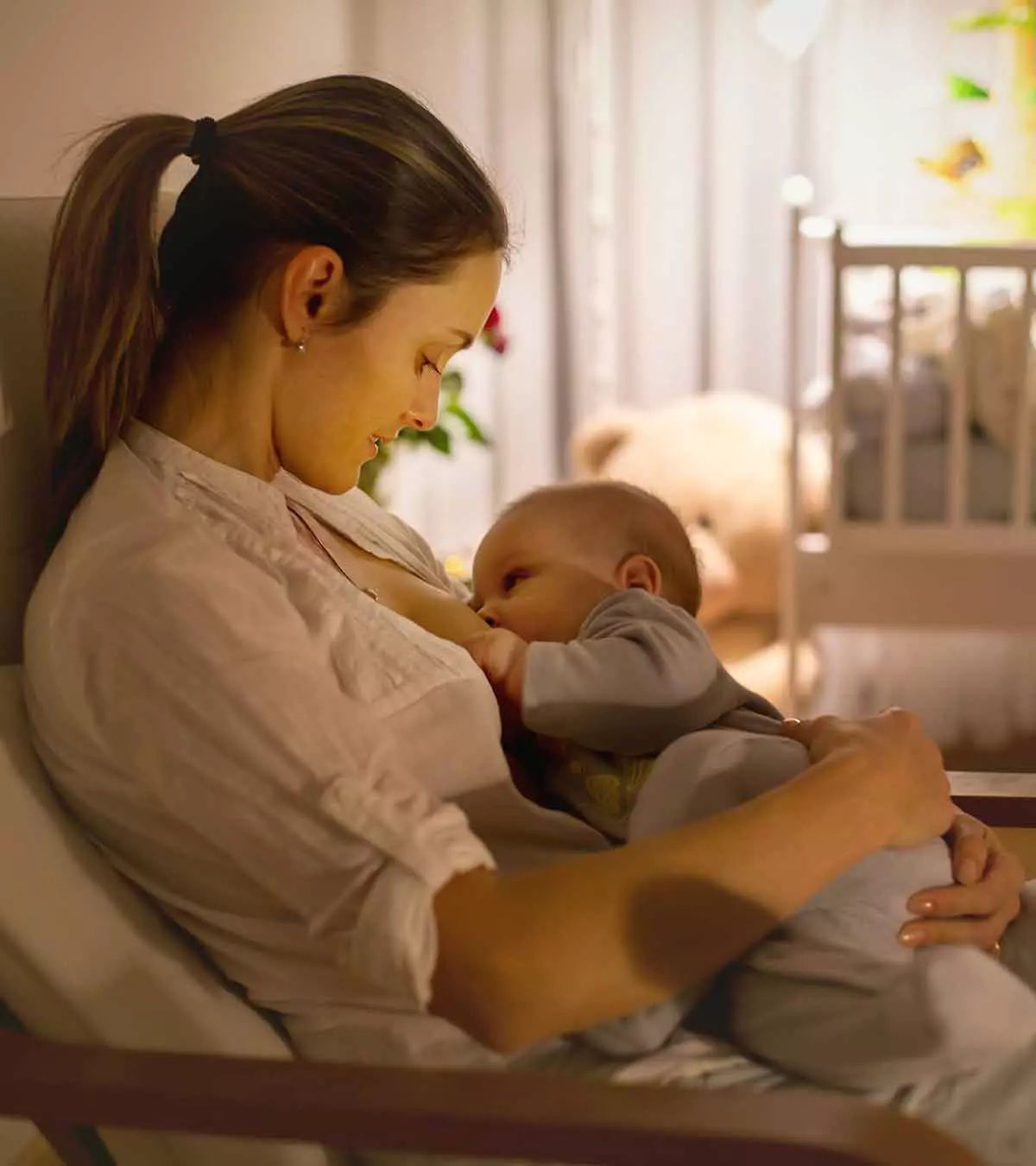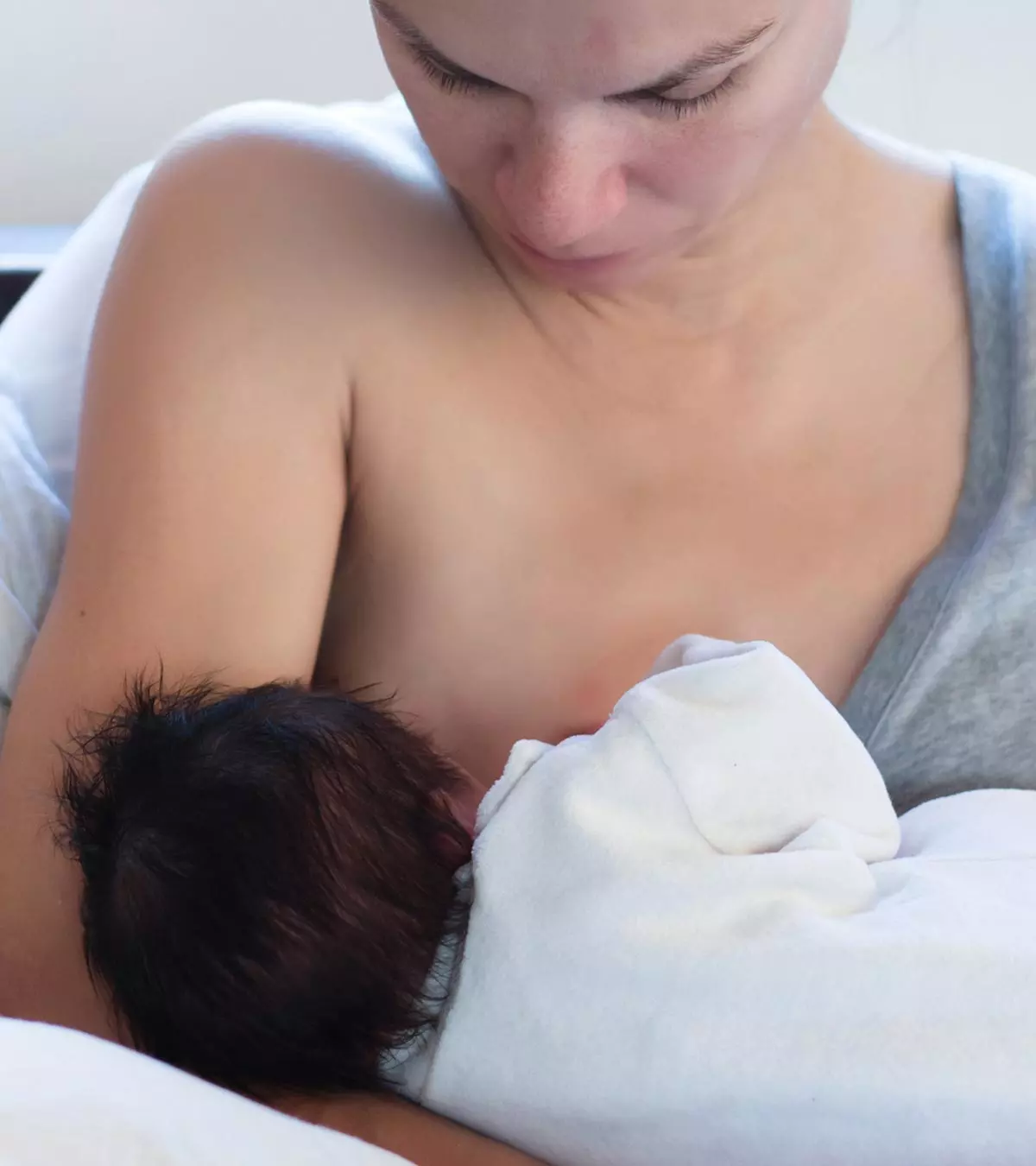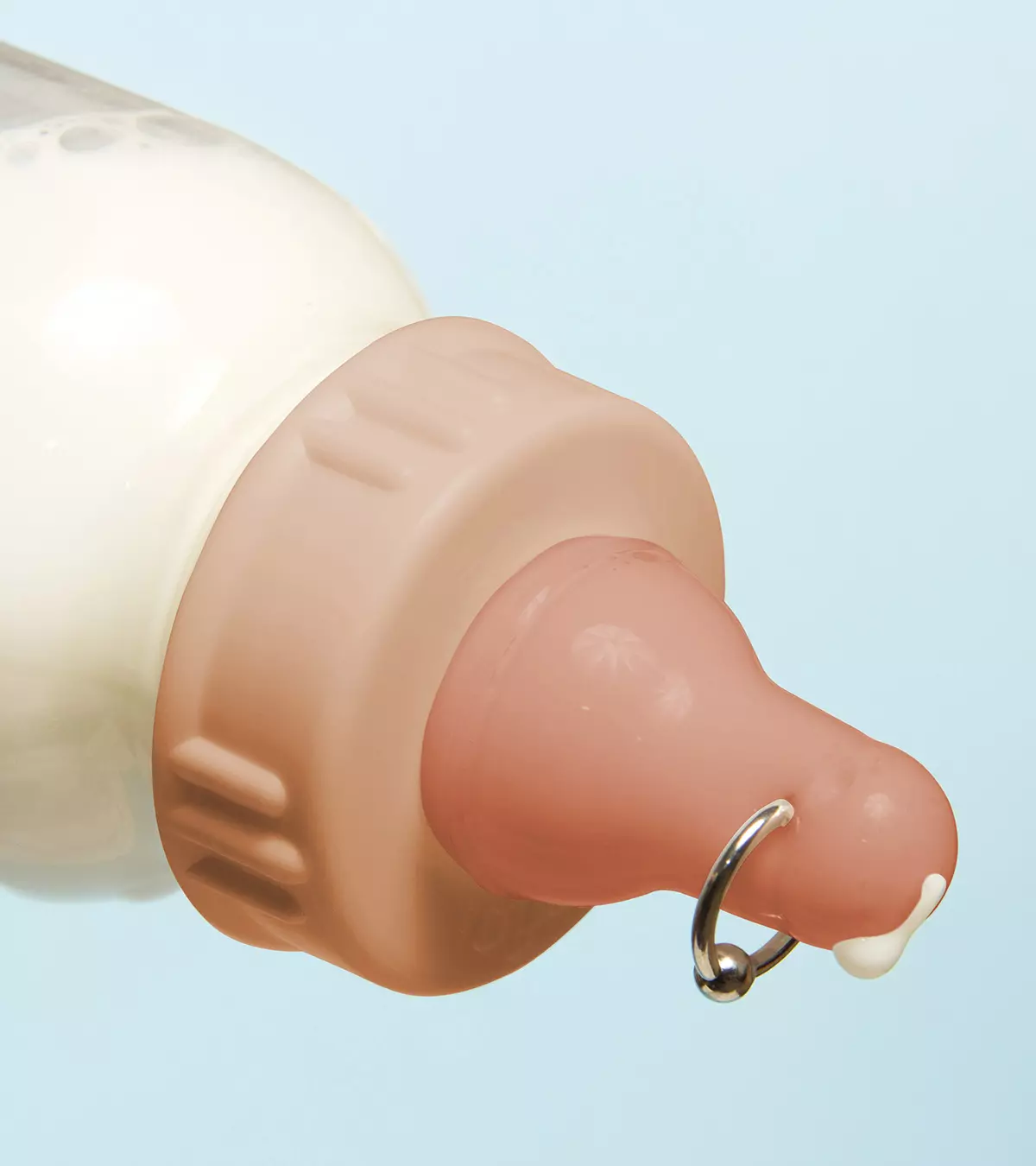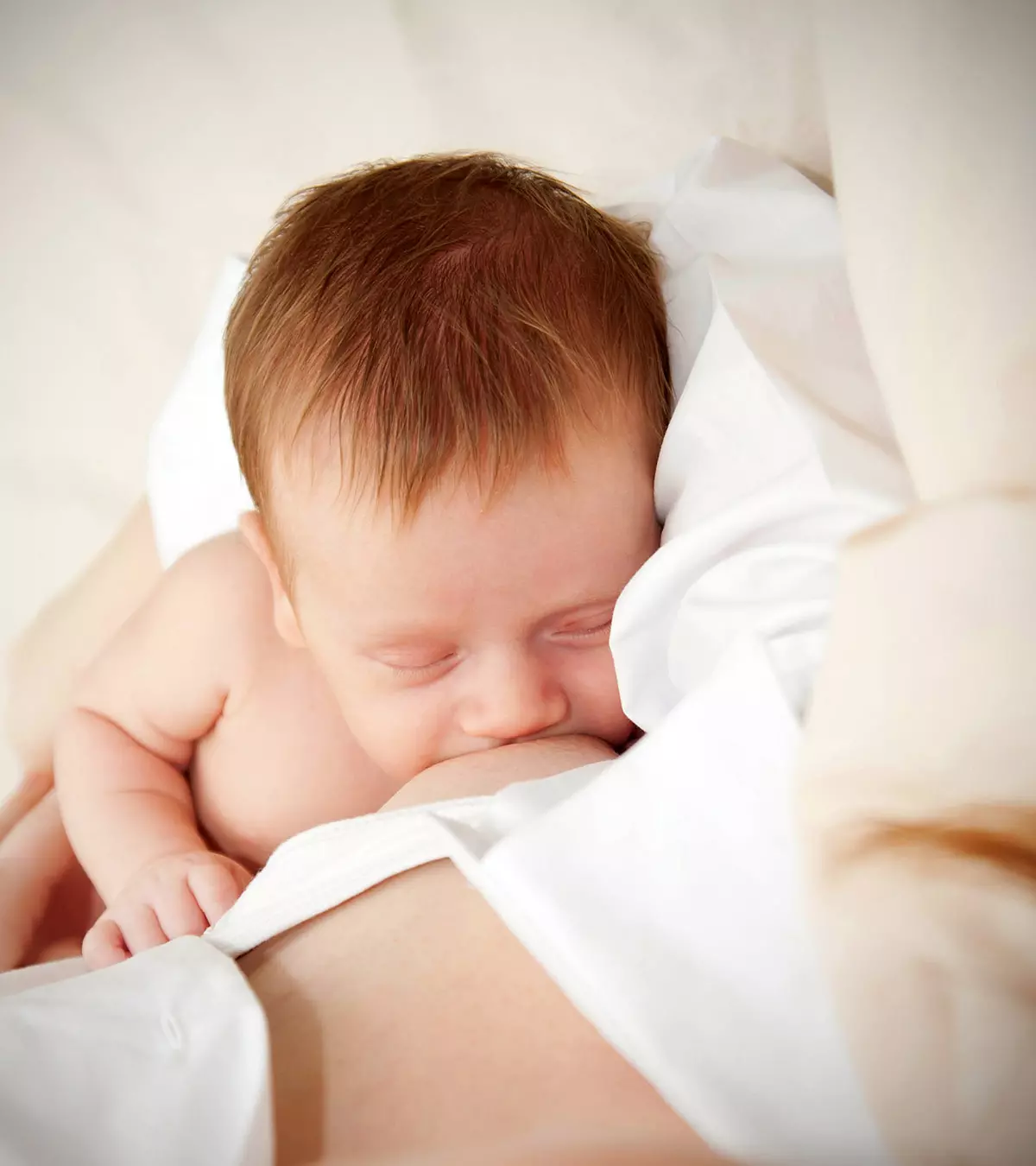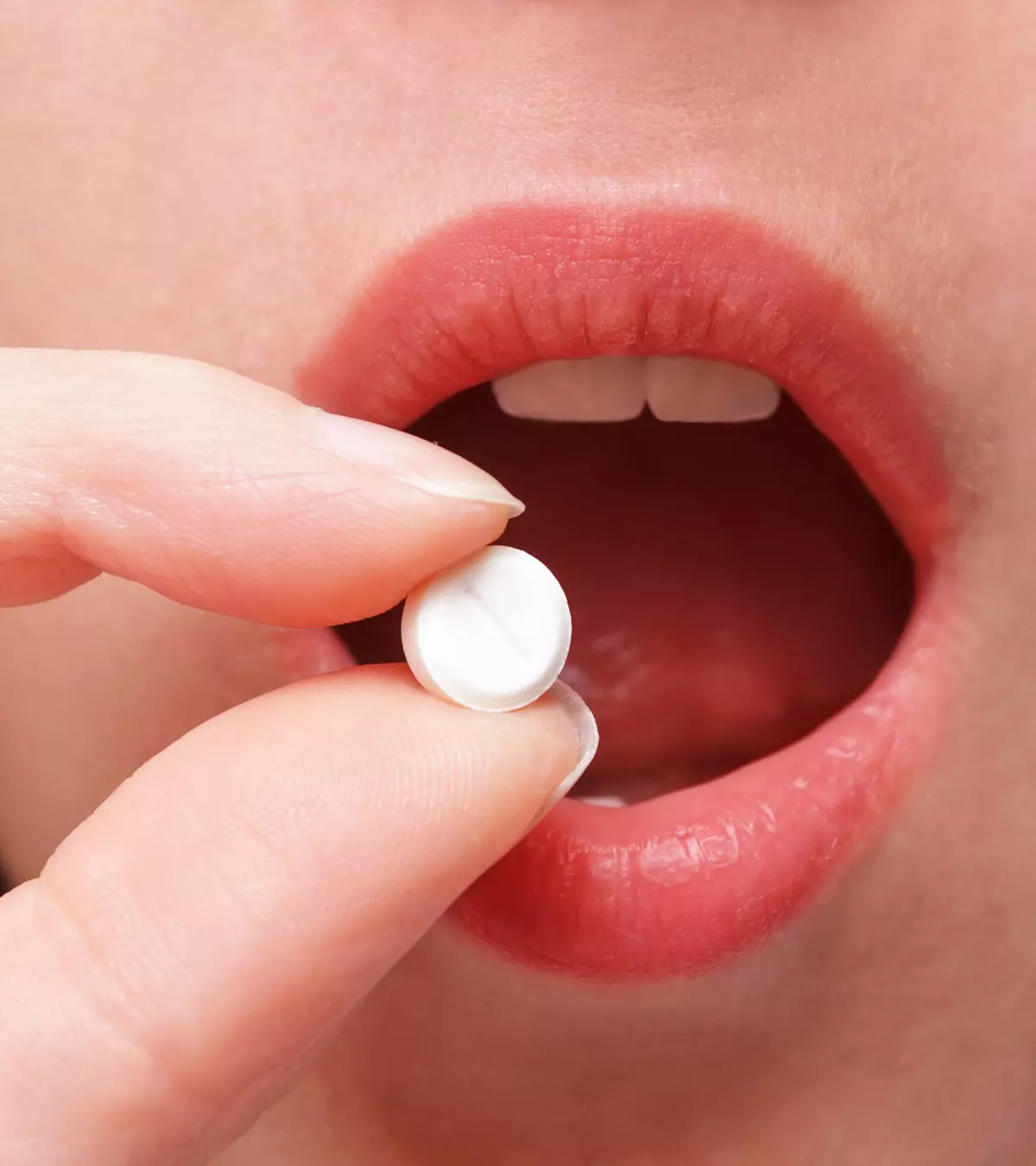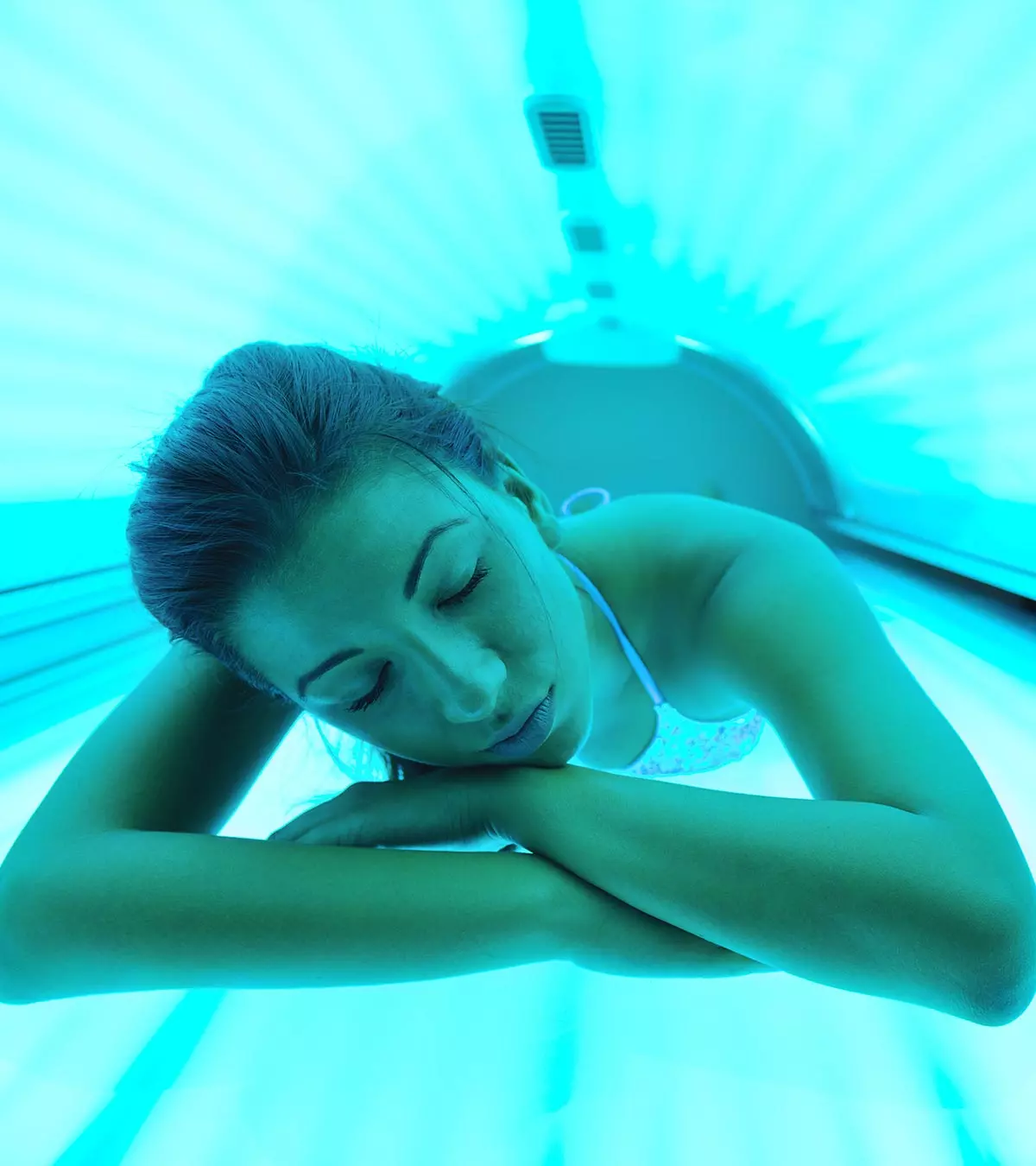
Image: Shutterstock
If you are a breastfeeding mother, it is quite natural to think twice before undergoing any procedures, such as ones involving radiation-emitting devices. Hence, many mothers are concerned about using tanning beds while breastfeeding, fearing it may harm their little one.
If you love to have that amazing beach-like tan from the tanning bed but are worried about its possible risks to your newborn, then this post may address all your concerns.
Read on as we discuss the safety concerns, possible side effects, and a word of advice before you use tanning beds while breastfeeding.
Key Pointers
- Tanning beds are devices used to artificially tan the skin.
- Ultraviolet rays are used by these devices to start the tanning process and achieve the desired outcome.
- Limited research is available on the effects of tanning beds on breastfeeding mothers.
- Potential side effects of using a tanning bed while breastfeeding include skin cancer, skin wrinkling, and changes in immune system functioning.
- It is recommended to seek advice from a doctor before using a tanning bed while breastfeeding.
About Tanning Beds
A tanning bed or a sun bed is a technological device that tans the skin artificially. A typical tanning bed emits 95% UVA and 5% UVB. The ultraviolet radiation produces an artificial tan. Most artificial tanning beds make use of several fluorescent lamps, which can emit high-intensity UVB rays that can have many side effects (1).
Types Of Tanning Beds
According to the intensity of UV rays on the lamp, there are different varieties of tanning beds available in the market:
- A typical home tanning bed consists of 15 to 28 lamps, where each lamp emits 100 watts power of UV rays.
- Tanning beds at salons comprise of 25 to 60 lamps, each of 120 to 200 watts.
- High-pressure beds are special models of tanning beds consisting of metal –halide gas lamps. These lamps emit a higher level of UVA rays. The Cobalt glass filter regulates the emission of the UV rays.

The tanning beds can be a stand-in or lie-down model. Most tanning beds consist of lamps on the top and bottom.
 Point to consider
Point to considerHow UV Rays Cause Skin Tanning
UV rays initiate the process of tanning in the human skin.
Melanin is an essential pigment of our skin, which handles skin coloration. The two types of UV rays UVA and UVB penetrate into the outer epidermis of the skin and harshly affect the pigmentation process.
Here are two activities of UV rays, to initiate tanning:
- The UVA rays oxidize the melanin, and the pigment undergoes a typical chemical reaction. After melanin gets exposed to the UVA rays, it turns darker and tans the skin.
- The UVB rays enhance the production of the skin pigment melanin. With increased melanin production, the skin turns darker, leading to tanning (2).
How Tanning Beds Do Skin Tanning
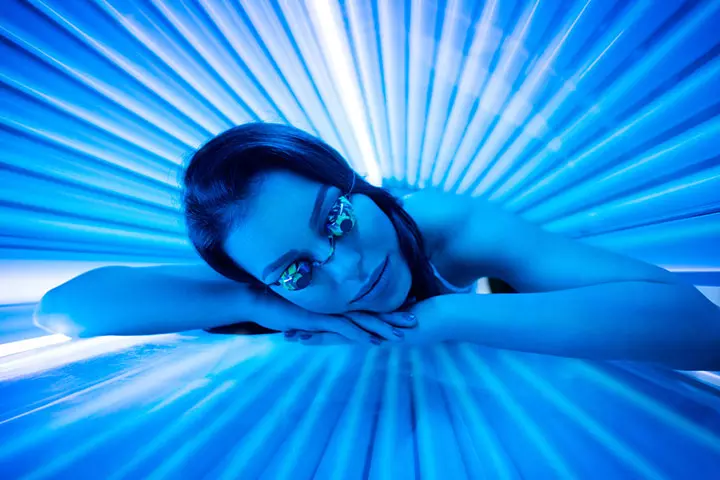
Tanning beds utilize artificial lamps, to produce UV rays. The artificially emitted UV rays affect the pigmentation process and initiate skin tanning. The tanning beds of old emit UVB rays, which are extremely harmful to the body. With the intervention of the latest technology, modern tanning beds emit UVA rays, which initiate the process of skin tanning.
Safety Of Tanning Bed While Breastfeeding
Can you use a tanning bed during breastfeeding or lactation phase? Although there is no evidence to prove that tanning has any negative impact on breastfeeding mothers. But it is always advisable to cover up your nipples, before using a tanning bed. The high temperature of the tanning bed can induce dehydration in lactating mothers.
Additionally, the UV rays can increase the risks of skin wrinkling or cancer. So, stay away from the tanning bed and stay safe. If you do want to get a tan, a natural tan is the best possible alternative. Sit on your balcony or on the beach. But don’t forget skin care practices like carrying an umbrella, as excessive sun exposure can harm your skin.
Negative Effects Of Tanning Beds While Breastfeeding
Tanning beds initiate artificial tanning of the skin. Some of the potential risks of tanning beds typically include (5):
- Skin Cancer:
When the outer layer of the epidermis (skin) is exposed to UV rays, enzymes initiate to repair the skin damage. However, some of the enzymes work adversely and initiate the growth of cancerous cells such as melanoma and basal cell carcinoma. The deadliest form of skin cancer is prevalent and can occur at any age (1). According to the National Cancer Institute, around 2.2 percent of men and women will eventually be diagnosed with skin melanoma. If you are younger than 35 years, it is advised to avoid using tanning beds.
 Did you know?
Did you know?- Eye Problems:
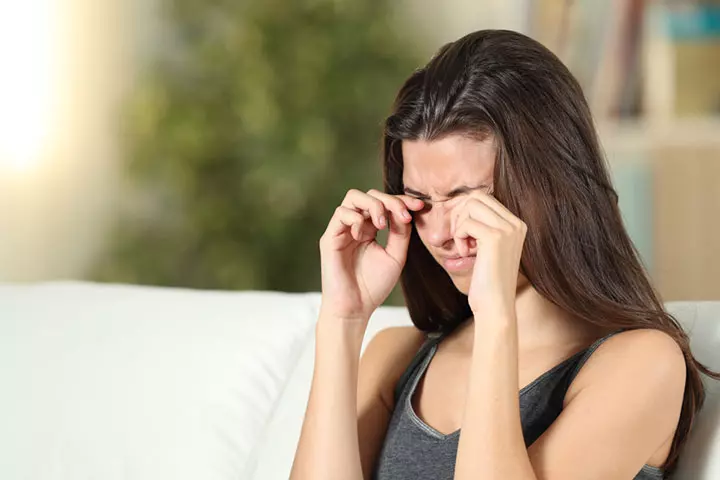
The UV rays in the tanning beds not only harm the skin but the eyes as well. It increases the risk of eye cancer or ocular melanoma in humans. Some individuals may encounter eye irritation after using tanning beds. Some other eye problems that can develop with use of tanning beds include inflammation of the cornea, photo conjunctivitis, and conjunctiva.
- Skin Aging And Wrinkling:
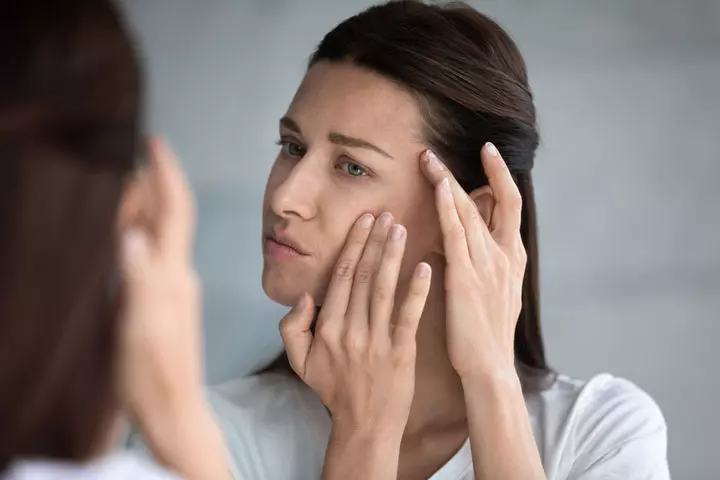
Excessive exposure to UV rays can trigger the process of premature aging or photoaging and skin wrinkling. The skin may sag, and small dark spots may develop on your face.
 Be watchful
Be watchful- Hampers The Immune System:
Excessive UV exposure can hamper the functioning of the immune system. Your body may become less resistive against disease-producing germs and more vulnerable to diseases (3).
Advice For Breastfeeding Mothers Who Prefer To Use Tanning Beds
Although tanning does not have any negative impact on your breastfed child, there are few pieces of advice you need to know during the breastfeeding phase:
- Consult your doctor before you decide on a tan. Tanning increases the skin cancer risk. Your doctor may check your health condition and advise you about tanning.

- While using a tanning bed, breastfeeding mothers should never go topless. If the nipples are kept exposed to UV rays, they might get burnt. It could increase your discomfort while breastfeeding the baby.
- Stay hydrated and schedule your tanning during cooler parts of the day, ensuring a gap between nursing sessions.
- Breastfeeding with sunburn can further increase skin sensitivity and initiate extreme skin irritation. The mother may find it difficult to control the unbearable irritation.
- Many tanning salons recommend using a tanning solution before going to the tanning bed. Remember that you should not apply the tanning lotion around the nipples.
Frequently Asked Questions
1. Can tanning beds affect the supply and quality of breast milk?
There is no direct evidence to suggest that tanning beds can affect the quality of breast milk (6). A sunburn or other skin damage from tanning may increase your risk of infection, which can indirectly affect your breast milk quality.
2. Can tanning beds affect my mood while breastfeeding?
UV radiation exposure stimulates the body to produce endorphins. The hormonal change may cause temporary feelings of calm and well-being (7). Indoor tanning reduces negative moods but also decreases interest (8). However, due to the limited number of studies and their diversity, further research is needed to verify and document this association.
3. Can tanning beds affect my energy levels while breastfeeding?
No direct evidence suggests that tanning beds can affect your energy levels while breastfeeding. However, spending a lot of time in tanning beds can lead to dehydration, which may indirectly affect your energy levels.
4. Can tanning beds affect my mental health while breastfeeding?
Tanning beds may affect the mental health of the users. A study analyzed the connection between indoor tanning frequency, depression, anxiety, obsessive-compulsive disorder, and substance use among college students. Indoor tanning was associated with symptoms of anxiety and OCD in men and the use of alcohol, tobacco, and other substances in women (9). More research is required to understand the reasons behind these effects.
With no evidence stating tanning beds are harmful while breastfeeding, you might use them with caution. However, keeping your nipples covered during the procedure and preferably opting for a natural tan under the sun is advised for protection. Some possible health risks of using these beds without proper precautions include skin cancer, wrinkling, aging, and suppression of immune system function. Therefore, it is always advisable to consult your doctor before undergoing such procedures regarding their safety or side effects.
Infographic : Negative Effects Of Tanning Beds And Guidelines For Breastfeeding Mothers
While using tanning beds when breastfeeding may not directly affect you or your baby, tanning beds have certain drawbacks. So before you get that tan, look at this infographic, where we walk you through the negative effects and offer some valuable advice. Illustration: Momjunction Design Team
Illustration: Is It Safe To Use Tanning Beds While Breastfeeding?

Image: Dall·E/MomJunction Design Team
References
- Indoor Tanning.
https://www.aad.org/media/stats-indoor-tanning - Ultraviolet(UV) Radiation.
https://www.fda.gov/radiation-emitting-products/tanning/ultraviolet-uv-radiation - The Risks Of Tanning.
https://www.fda.gov/radiation-emitting-products/tanning/risks-tanning - Indoor Tanning.
https://kidshealth.org/en/teens/indoor-tans.html - 10 Surprising Facts About Indoor Tanning.
https://www.aad.org/public/diseases/skin-cancer/surprising-facts-about-indoor-tanning - Tanning Beds and Fake Tans.
https://llli.org/breastfeeding-info/tanning-beds-fake-tans/ - Spotlight on Seasonal Depression: Why Indoor Tanning Isn’t an Effective Treatment
https://www.skincancer.org/blog/spotlight-on-seasonal-depression-why-indoor-tanning-isnt-an-effective-treatment/ - Carolyn Heckman et al.; (2016); Mood Changes After Indoor Tanning Among College Women: Associations with Psychiatric/Addictive Symptoms
https://www.ncbi.nlm.nih.gov/pmc/articles/PMC4926028/ - Catherine E. Mosher and Sharon Danoff-Burg; (2010); Indoor Tanning, Mental Health, and Substance Use among College Students: The Significance of Gender
https://www.ncbi.nlm.nih.gov/pmc/articles/PMC3756883/
Community Experiences
Join the conversation and become a part of our nurturing community! Share your stories, experiences, and insights to connect with fellow parents.
Read full bio of Arushi Agrawal
Read full bio of Jessica Albert
Read full bio of Rohit Garoo
Read full bio of Shinta Liz Sunny











